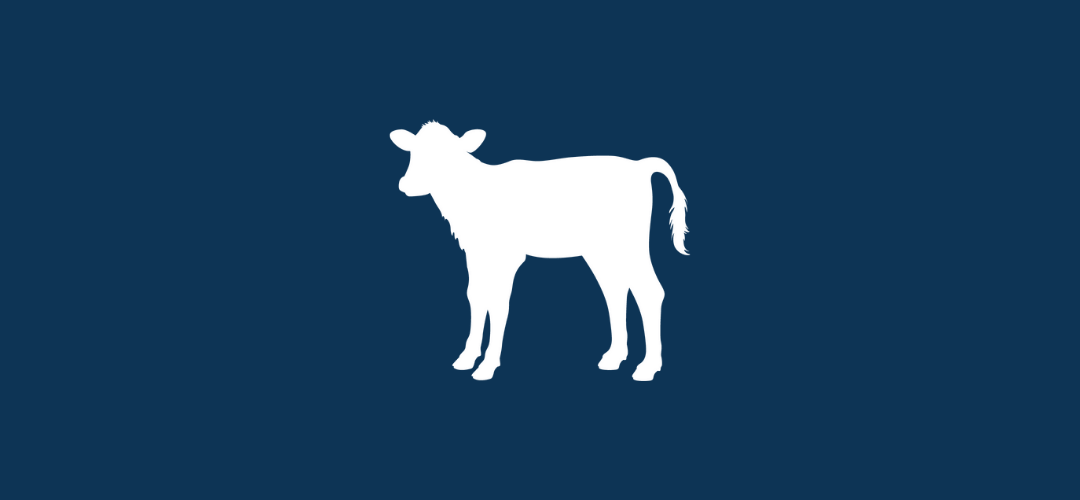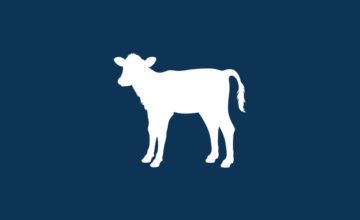Managing Behaviour at Weaning
- Oct 30, 2023
- By Grober Nutrition
- In Canada
Weaning can be a stressful period for a calf, quickly offsetting their performance trajectory if done at the wrong time, or in the wrong way.
Whether managing a calf destined for meat or milk production, the basic concepts of readiness to wean remain the same. Factors such as time on milk, amount of milk fed, calf health and housing type should all be considered when determining if a calf is ready to be weaned.
In a natural setting, calves would stay with their dam after birth and be able to suckle colostrum until being naturally weaned at 7-8 months of age. The weaning process comes more naturally due to a gradual increase in grain intake and time spent ruminating.
When calves raised on farms are weaned at an earlier age, they tend to exhibit behaviours that are concerning when considering their welfare. Some of these behaviours are indicators of chronic hunger including:
- Vocalization
- Reduction of play behaviour
- Decreased lying time
- Redirected/non-nutritive sucking time
- Increased visits to the feeder in an automatic feeding system
In addition, cross sucking is a very common behaviour to observe at weaning.
Causes of negative behaviour at weaning
Calves that are fed restricted amounts of milk, weaned abruptly, or weaned in a short period tend to show more behaviours that are indicative of chronic hunger. Calves that were fed less milk per day were found to have increased amounts of vocalizations throughout the day at higher pitches than the calves fed a higher milk allowance per day. This also continued to be true for calves that are quickly weaned at a young age.
Impact of housing on readiness to wean
Housing also plays a part in weaning behaviour. Calves that were housed individually were found to have 5 times as many vocalizations per hour compared to those paired at 5 or 28 days. Calves that are fed in an automated milking system also tend to have higher amounts of unrewarded visits to the feeder (visiting the feeder when they do not have an allowance for milk) when being fed decreased amounts of milk. Increased frequency of unrewarded visits to the feeder is also found throughout the weaning process, where those weaned over a 5-day weaning period had 15 times more unrewarded visits to the feeder compared to those weaned over 10 days.
How to limit non-nutritive suckling and cross-sucking
Being raised without their dams present, calves will exhibit suckling behaviour all throughout the day. Thus, cross sucking and suckling on inanimate objects tends to be a common behaviour observed during the calf weaning process. Suckling is a natural response in calves that helps with the secretion of hormones related to digestion, satiety, and stress. It also reduces arousal at feeding. A few ways that may aid in reducing the amount of non-nutritive sucking in calves is to provide additional sucking opportunities and hay at weaning. Some studies have found that providing starter bradens (a nipple on a bottle of starter) resulted in reduced cross sucking between calves when compared to those given a bucket of starter. In addition to providing starter, feeding hay may also reduce suckling by increasing feeding time and solid intake resulting in increased weight gain at weaning. Providing other outlets for sucking reduces negative weaning behaviour.
Cross sucking has been found to be an increased issue when calves are fed restricted amounts of milk and when there is decreased energy intake due to the weaning process. Cross suckling also increases with decreasing meal size, thus it is important to ensure that meal allotment size is not set too low.
How to combat negative behaviours at weaning
The negative behaviours causing welfare issues at weaning can be combatted by using various management methods:
- Implement a more gradual weaning process allowing the calves to have small decreases in milk allotment for 10-14 days to help encourage starter intake.
- Allow the calves to have more time on milk (ie. an extra 2-3 weeks) until their starter intake increases to a level that can support energy requirements once they are no longer receiving milk. A general rule to use is calves should be eating at least ½ lb of grain for 21 to 28 days prior to weaning. This may be slightly different depending on the milk allowance, as the higher the milk allowance, the less grain the calf will consume.
- Pair younger calves with older calves in group housing. This will allow for the calves to learn to consume more starter.
Preventing negative behaviours at weaning will allow for greater average daily gain, better feed conversion and more time lying and ruminating.
Considering the timing of events may also help to reduce stress responses at weaning. This may include leaving the teat available to suckle on post weaning. The various behaviour changes found at weaning like increased vocalizations, increased cross sucking and sucking of inanimate objects, reduction of play and reduction of lying time is often a result of hunger and stress at this time. It is important that producers work to reduce weaning stress to allow for optimal success post-weaning and into their future transitions.















